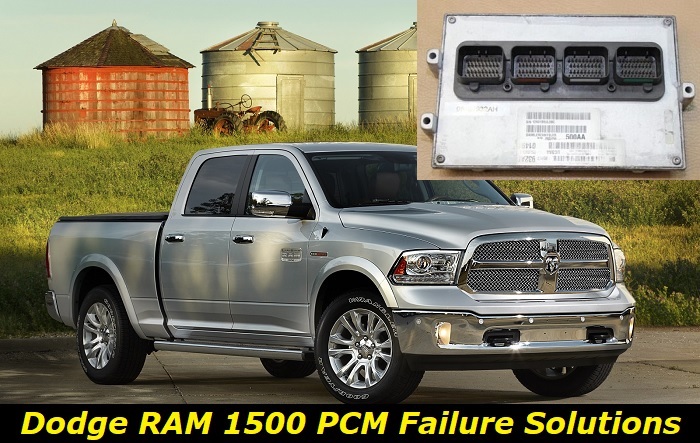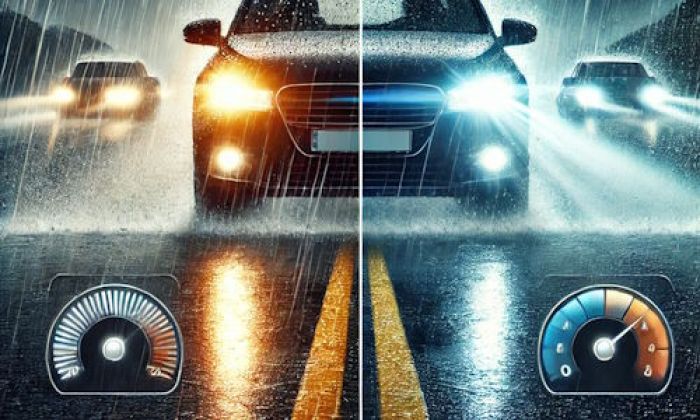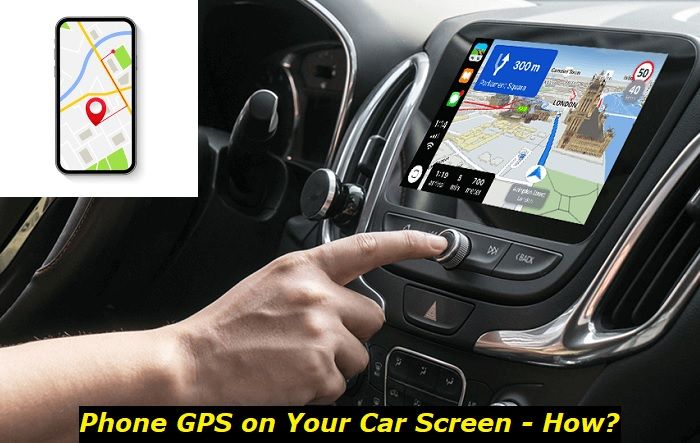Dodge RAM 1500 is one of the most loved trucks in the US. It exudes style, muscle, and comfort for its occupants. It is the best you can get if you are shopping for the classiest truck with loads of power under the hood. The 5.7 L V8 badge at the side of the truck serves as a strong statement wherever this truck pulls up.
PCM problems highlights
- Module's importance:Extremely high
- Prone to failure:Yes
- Reasons for failure:Water, damage, ECM problems, TCM problems
- Ways to reset:Disconnecting, scanner tool diagnostics
- Sphere of control:Powertrain (engine, transmission, AWD systems)
- Symptoms of failing:Powertrain anomalies, powertrain codes
- Price to repair:$180 - $300
- Price to replace:$750 - $1,650

What is Powertrain Control Module (PCM)?
A Powertrain Control Module or PCM is a car component used to control many essential features and functions of your car. A PCM typically includes the Engine Control Unit (ECU) and the Transmission Control Module (TCM). A PCM is mandated to control over 100 functions of your RAM 1500 truck. In layman's language, it is safe to say the PCM is the brain of your car. The malfunctioning of a PCM will cause a load of problems ranging from the car not starting to not shifting right.
The PCM in your Dodge RAM 1500 truck is located in the engine compartment. It is installed on the right side of the firewall. The PCM's critical functions in your truck are controlling the engine and the powertrain and communicating how these car parts and systems are working with the rest of the car. Though the driver might not know the details of how the truck works under the hood, the check engine light (CEL) lets you know whether the PCM is alright.
What role does PCM play in Dodge RAM 1500?
As stated above, the PCM incorporates the ECM and the TCM functions. The ECM collects information from various sensors in the engine, and from the readings, it will adjust the engine settings accordingly. On the other hand, the TCM controls many electrical car functions using information from sensors. TCMs are generally found in automatic cars.
The PCM in your truck controls the vehicle's drivetrain, and it manages to do this by combining the functions of the ECM and the TCM. By coordinating the operations of these two modules, the PCM ensures optimal fuel economy and car performance. Key tasks of PCM are as follows:
- Idling speed
It is the PCM that controls the idling speed of your truck. When your car idles roughly, among the first things the mechanic checks is the PCM. When the truck is stationary, and you happen to turn on the AC, the PCM makes the engine's rev go higher. This is to ensure the power consumed by the AC system is adequately compensated, preventing the engine from stalling. The rev is also regulated to avoid unnecessary fuel consumption.
- Ignition timing
It is the PCM that controls the timing of spark plugs firing. This is done by reading what the driver needs at any particular moment, and the spark plugs fire accordingly to give the car the required power. The PCM ensures the car responds to how the driver pushes the accelerator and the brake pedals.
- Control of air-to-fuel ratio
The PCM takes readings from the ECM and adjusts the air-to-fuel ratio accordingly. The stoichiometric mixture ratio for gasoline in your truck is 14.7:1. For every 14.7 grams of air, one gram of gasoline is required for the perfect combustion inside an engine.
There are times when the engine is unable to achieve this ideal combustion ratio, and it is the PCM that corrects the situation. By correcting the engine's combustion process, the PCM effectively prevents the engine from stalling.
- Monitoring of errors
The Dodge RAM 1500 PCM monitors the errors in the truck. After detecting an error, the PCM strives to rectify it. When the PCM cannot correct a particular error, the driver is warned through the CEL on the dashboard. The check engine light is often accompanied by the 'No Bus' message on the dash. The No Bus message means there is no proper communication in the system.
How can you know your Dodge RAM 1500 PCM has issues?
Dodge Ram 1500 truck owners know the PCM issue, especially after frequenting the RAM 1500 online forums. Because of the non-mechanical nature of work the PCM does, you are not likely to experience problems relating to it. However, if you have an older car or are unlucky that yours is not a very old car but suffers from PCM issues, here are some symptoms to guide you;
- Check the engine light - Whenever your truck's PCM registers an error, the CEL icon will light up on the dashboard. The PCM will self-adjust and diagnose, but the CEL icon will appear if it fails to solve the problem. The 'No Bus' message will also appear on the dash if the PCM has an issue. The other gauges will be off, or most of them will be off. You will have an easier time knowing it is the PCM to check when you see the message and the CEL icon at the same time.
- Engine running or idling rough - Because the PCM is having issues, you will start noticing that your RAM has a rough idling. The truck will also misfire, and the engine will not run smoothly. Even though the truck might start properly, the engine will fail to pick up because the communication between the ECM and the PCM is dead.
- Poor performance - As highlighted above, the PCM maintains the fuel-to-air ratio. Any time this ratio is off, the fuel economy will deteriorate.
- Wrong error codes - When you run the diagnostics machine on the truck, and all manner of wrong codes get highlighted, it is time to check the PCM. Wrong codes mean the PCM is misdiagnosing the car and giving the wrong codes.
Solving PCM issues and the cost
- Self-diagnosis
The first thing to do is self-diagnose the PCM. Start by turning the key to the OFF position. Press the odometer's reset button and turn the ignition keys ON. Release the odometer reset button when the message CHEC comes on where the NO BUS message previously was.
Numbers will appear and will run up to 999. For every number that is indicated, it means that it is an error code. For the number codes shown, the car will diagnose the issues related to the code once you press the odometer reset button. If self-diagnosis fails, then it is time to check the PCM itself.
- Testing the PCM
The PCM is normally located on the passenger side of the Dodge RAM 1500. On opening it, you will find three connectors, but this depends on the model of your truck. This process requires an expert because voltage testing is involved, and the correct voltage readings which should be done using a digital voltmeter must be confirmed. If the PCM is faulty, you will need to repair or replace it.
While using the diagnostics machine, it is important to note that all errors starting with P relate to 'the powertrain'.
- Clean the PCM
Start by removing the battery cables and leaving the car for several minutes to allow complete discharging. This test should help you pinpoint the PCM issue. Pay attention to this because unhooking the PCM immediately after disconnecting the battery cables may destroy the PCM.
Using an electrical grade contact cleaner, clean the pins' male and female ends. After the cleaner has dried up, use dielectric grease on the edge of the connector. Ensure none of the grease gets on the pins. Reconnect the clamp and the battery cables. This procedure is relatively easy and cheap.
- Replacing the PCM
After all, diagnostics have been run, the dealer might recommend replacing the PCM. Because the Dodge RAM 1500 PCM is not hidden, the associated labor for repair or replacement is around $50 or less. A new PCM for this truck goes for about $1,000.
Conclusion
The Dodge RAM 1500, being a premium truck, has been built with high-quality materials and by leading experts in the industry. After interacting with many RAM 1500 owners on the many Dodge online forums, you will note that this truck is likely to develop a PCM issue when it reaches 90,000 miles. This means the problem is mainly experienced in relatively older 1500s.
Dodge appreciates this powertrain component's importance, which is why a self-diagnosis option is provided. One can find the powertrain codes on Dodge forums where you will have an easy time diagnosing and solving any PCM problem. To avoid making mistakes, it is advisable that when the car fails to self-diagnose, you get expert help. Such an expert can tell whether the problem is the fuel system, TIPM, or even the wiring system.
About the authors
The CarAraC research team is composed of seasoned auto mechanics and automotive industry professionals, including individuals with advanced degrees and certifications in their field. Our team members boast prestigious credentials, reflecting their extensive knowledge and skills. These qualifications include: IMI: Institute of the Motor Industry, ASE-Certified Master Automobile Technicians; Coventry University, Graduate of MA in Automotive Journalism; Politecnico di Torino, Italy, MS Automotive Engineering; Ss. Cyril and Methodius University in Skopje, Mechanical University in Skopje; TOC Automotive College; DHA Suffa University, Department of Mechanical Engineering






Add comment